Top AppsFlyer Creative Optimization Alternatives in 2025
If you manage user acquisition or creative performance, you know how hard it is to sift through the cluttered data offered by MMPs or ad networks. Attribution tools show what happened, but not why. As campaigns grow across networks, it becomes harder to see which visuals, hooks, or messages drive results.
That is why many teams now look beyond attribution. They need creative intelligence that explains performance, speeds up testing, and helps them plan what to produce next.
Where AppsFlyer stops and your workflow continues
AppsFlyer’s Creative Optimization module brings creative, cost, and conversion data together. It is useful for teams already using AppsFlyer as their MMP. It helps visualize top ads and compare results across networks.
It offers an AI-driven creative optimization product that combines creative performance across networks and formats into a single view. The company publishes an annual ‘State of Creative Optimization’ report, based on large-scale ad data.
Yet, its focus remains attribution. The creative insights stay surface-level. Teams that want automated tagging, faster analysis, or creative testing workflows often look for a creative-first layer that adds more depth to their MMP data.
Why teams move to creative-first alternatives
Teams move to creative-first tools when they need faster insights, simpler setup, and clearer links between creative and ROI.
1. Deeper creative intelligence - Growth teams want to know what is inside a winning ad. They need to see how elements like copy, visuals, or gameplay affect installs and ROI. Creative-first tools use AI tagging to show these patterns clearly.
2. Faster iteration and easy setup - Modern platforms connect to ad accounts and MMPs with simple integrations. Small teams can test and optimize creatives quickly without extra engineering support.
3. Cost and workflow flexibility - Creative-focused tools often charge by ad volume or seats, not app installs. This helps smaller studios and agencies manage budgets while running more experiments.
Creative optimization is no longer just reporting. With privacy limits and short creative cycles, teams now need tools that connect creative data to real outcomes like installs and revenue. This is why more user acquisition and growth teams in 2025 are adopting creative-first platforms that focus on insights, speed, and clarity.
Suggested watch: Free AI Creative Audit - a quick walkthrough that shows how automated creative tagging reveals which ad elements drive performance.
Top Alternatives to AppsFlyer for Creative Optimization
If you’re exploring options beyond AppsFlyer, don’t focus only on feature lists. The real differences come down to reliable integrations, easy tagging, and insights that truly link to what matters most: installs and revenue. Before choosing a platform, ensure it aligns with your workflow and provides clear, creative-level insights.
Here are the top alternatives:
1. Segwise
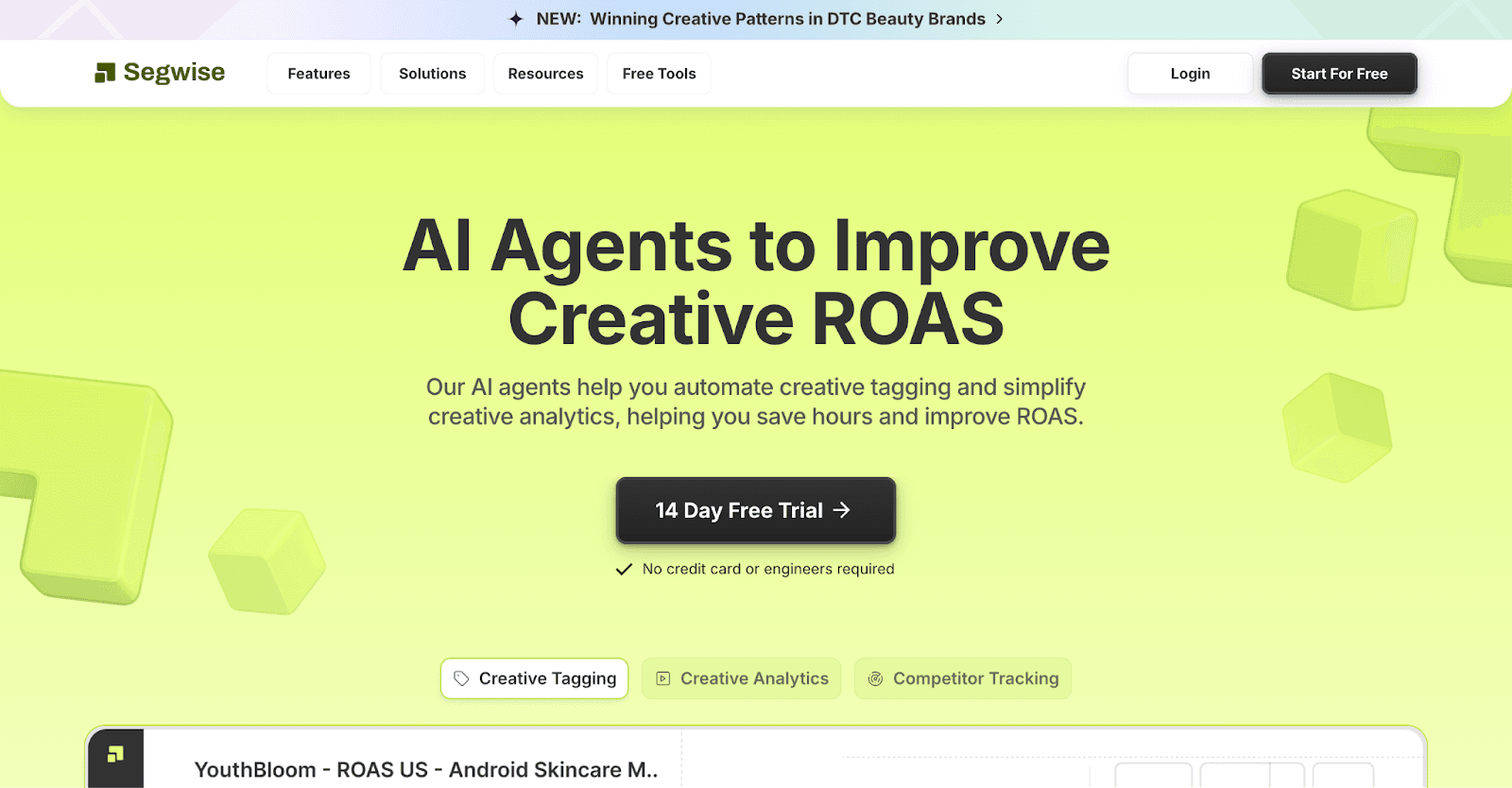
Segwise is an AI-driven creative intelligence platform designed to give growth and user acquisition teams a deeper understanding of their ad performance than any other tool in the market. Unlike attribution platforms such as AppsFlyer, which primarily serve as MMPs with limited creative analytics as a side feature, Segwise offers advanced, data-rich insights into every creative asset.
By leveraging AI-powered tagging at both creative and nomenclature levels, Segwise automatically identifies and categorizes every visual and auditory element, from headlines and characters to backgrounds and soundtracks. It then analyzes these details to reveal what drives engagement and performance, offering actionable recommendations across hundreds of creatives.
Its unique custom tagging capability lets teams define their own parameters for analysis, an intelligent, flexible alternative to the expensive tagging systems offered elsewhere. Beyond attribution, Segwise unifies data from ad networks, MMPs, and CDPs into a single intelligent dashboard, enabling UA teams to track, compare, and optimize creatives with unprecedented clarity. It acts as both the analytical and operational layer for creative optimization, making it the most comprehensive alternative to AppsFlyer’s creative module in 2025.
Key creative features
AI-driven tagging across video, image, and playable ads.
Tag-level dashboards linking creative components to CPI, ROAS, and IPM.
Direct integrations with ad accounts and MMPs using a simple no-code setup.
Custom tagging gives teams the flexibility to define what matters most to their campaigns, making insights far more relevant and actionable.
Creative gallery view for quick comparison and collaboration across teams.
Strengths
Provides element-level visibility instead of just campaign-level reports.
Replaces multiple dashboards with a single creative optimization suite.
Automates creative tagging, saving hours of manual labeling and categorization.
Links every creative component directly to revenue and ROI metrics.
Easy to set up with no engineering support required.
Designed for both UA teams/performance marketers and creative teams, improving collaboration and decision-making.
Limitations / Considerations
Not an attribution platform — works alongside MMPs such as AppsFlyer or Singular.
Focuses on creative analytics and insights rather than install tracking.
Requires initial data sync from ad accounts and MMPs to unlock full functionality.
Best For
UA and growth teams that want a full creative optimization suite rather than a reporting add-on. Especially effective for gaming studios, subscription apps, and DTC advertisers that run high creative volumes and need fast, tag-level insights to guide creative production and media scaling.
Suggested watch: Watch this video on AI Creative Tagging & Analytics. It shows how AI tags creative elements in ads and connects them to key performance metrics, such as CPI and ROAS.
2. VidMob
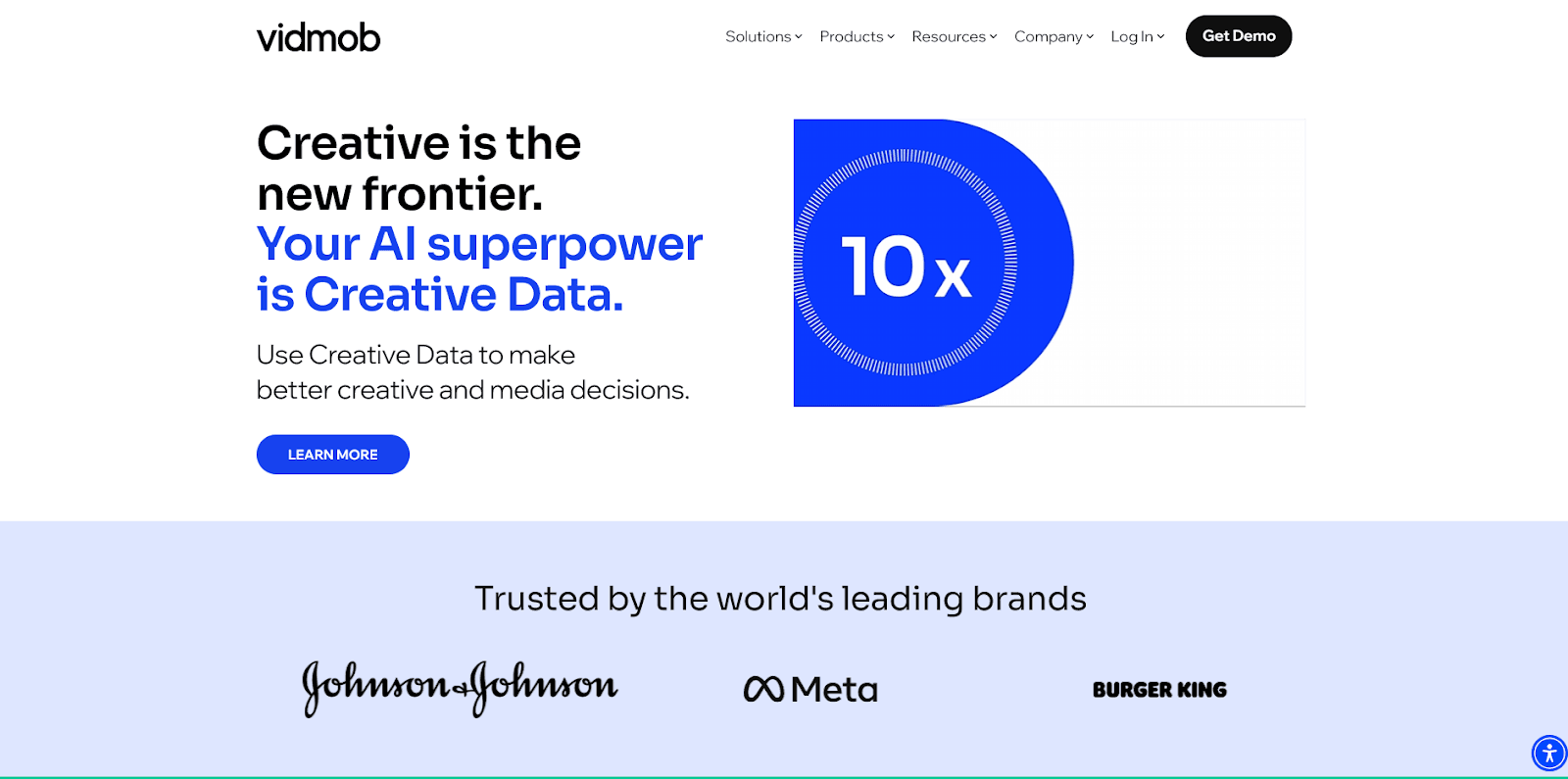
VidMob is a creative analytics and intelligence platform that helps brands measure and improve ad performance through creative scoring. It analyzes how different creative attributes influence campaign outcomes and provides data-backed recommendations for optimization.
Key creative features
AI-driven creative scoring that ranks ads by predicted performance.
Visual recognition and text analysis for identifying creative patterns.
Performance dashboards and automated creative insights.
Data exports and APIs for integration with BI tools.
Collaboration features for managing assets and campaigns.
Strengths
Strong creative scoring system suited for enterprise marketing teams.
Offers integrations with BI platforms for in-depth analysis.
Good for brand-level insights and strategic performance reviews.
Limitations / Considerations
Focuses more on high-level scoring than granular creative analysis.
Lacks tag-level visibility into specific elements like gameplay, text, or audio.
Setup and workflow are heavier, often requiring coordination with VidMob’s service team.
Less suited for fast-paced UA environments that need daily creative testing and iteration.
Best For
Large marketing or brand teams that prioritize creative quality benchmarking and long-term strategy over rapid, tag-level testing.
3. Replai
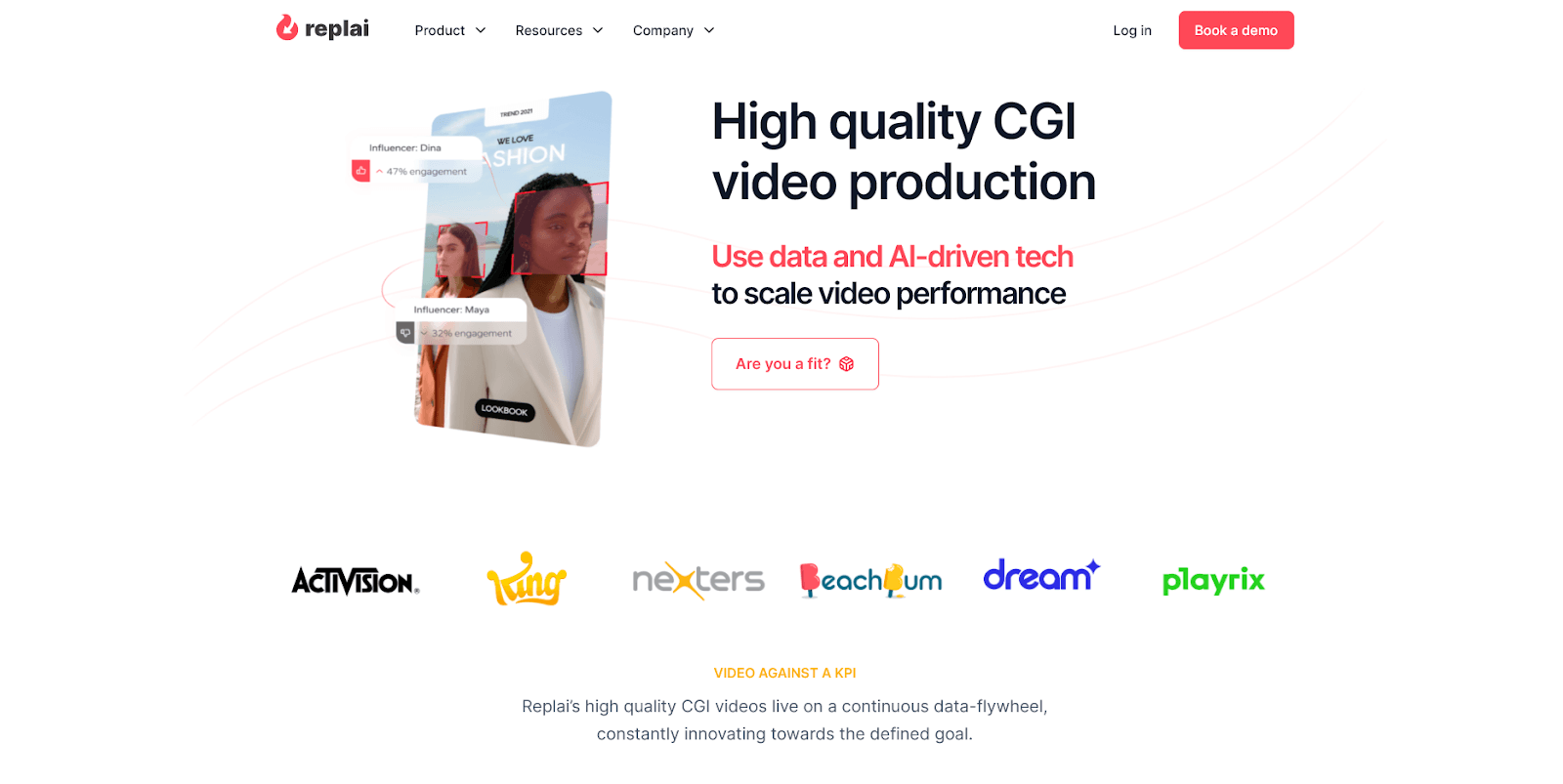
Replai is a creative intelligence tool focused on video analysis for mobile-first advertisers. It uses computer vision to identify patterns in ads and links them to performance trends. Many gaming teams use it to streamline reviews across large video libraries.
Key creative features
Computer-vision tagging for video assets.
Creative clustering and pattern discovery.
Cross-network performance views for UA teams.
Alerts that flag drops or lifts in creative results.
Integrations with common ad platforms and MMPs.
Strengths
Built for high-volume video testing in gaming.
Fast pattern surfacing across similar edits and cuts.
Helpful for spotting fatigue and timing issues in videos.
Limitations / Considerations
Emphasis on video. Image and playable workflows may need extra steps.
Tag depth is pattern-level, not element-to-ROI at the tag level.
Custom taxonomies and BI-grade exports can be limited by plan and setup.
Best insights arrive after enough volume, which can slow small teams.
Best For
Mobile gaming teams with large video pipelines that want quick pattern reads and fatigue detection.
4. CreativeX
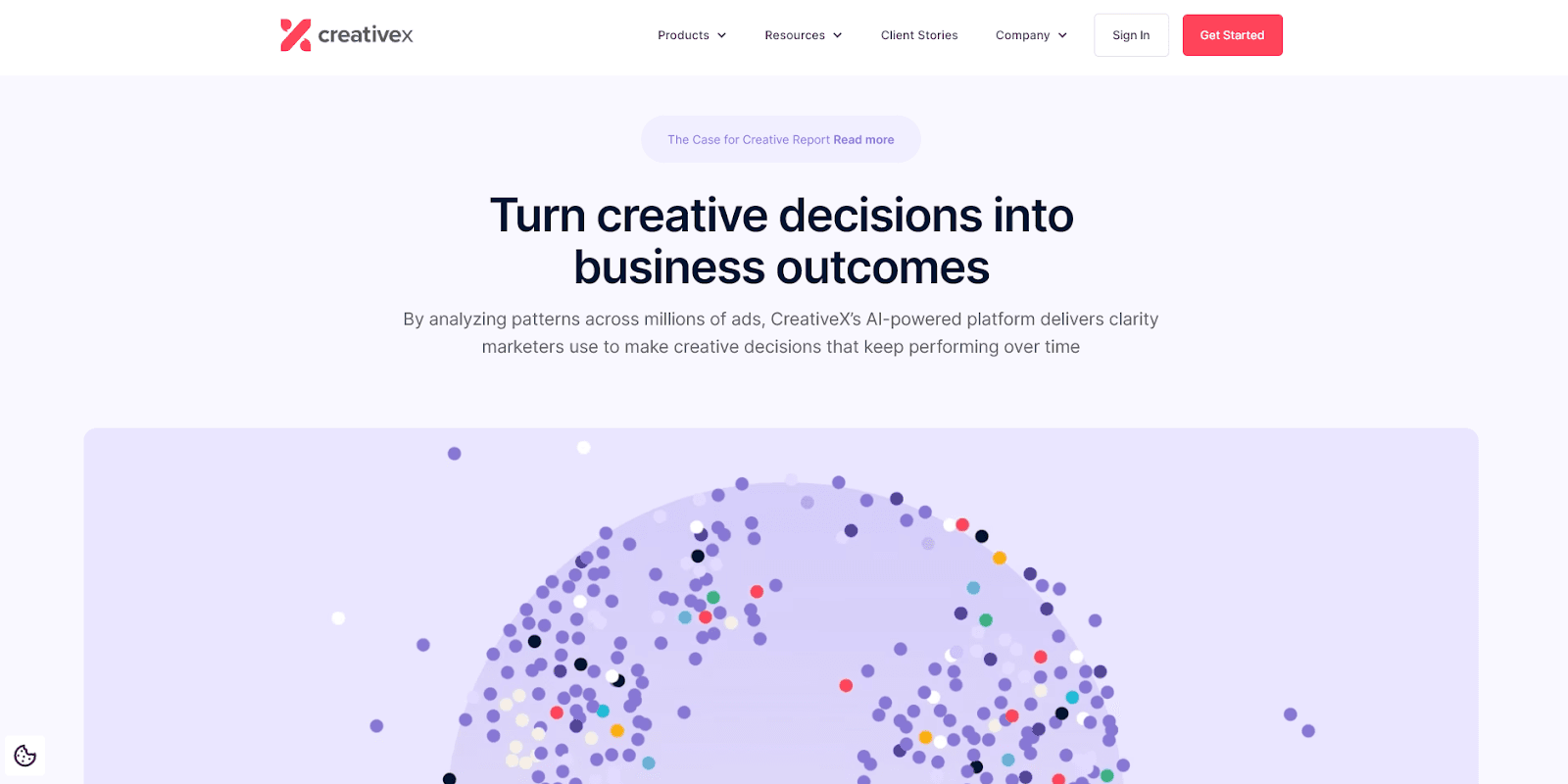
CreativeX is a creative quality and consistency platform. It measures whether ads follow brand and platform best practices. It helps large teams enforce standards before and after launch.
Key creative features
AI checks for brand and platform compliance
Quality scoring and readiness reports
Global governance for logos, text, and tone
Centralized asset libraries and approvals
Benchmarks by market and platform
Strengths
Strong at enforcing brand consistency at scale
Useful pre-flight checks to reduce wasted spend
Clear governance for multi-market teams
Limitations / Considerations
Focuses on quality and compliance, not performance drivers
Limited link from specific creative elements to CPI, ROAS, or IPM
Less suited for rapid UA testing and daily iteration
Heavier workflows for small or fast-moving teams
Best For
Enterprise brands that need strict creative governance across markets and platforms.
5. Singular (Creative IQ)
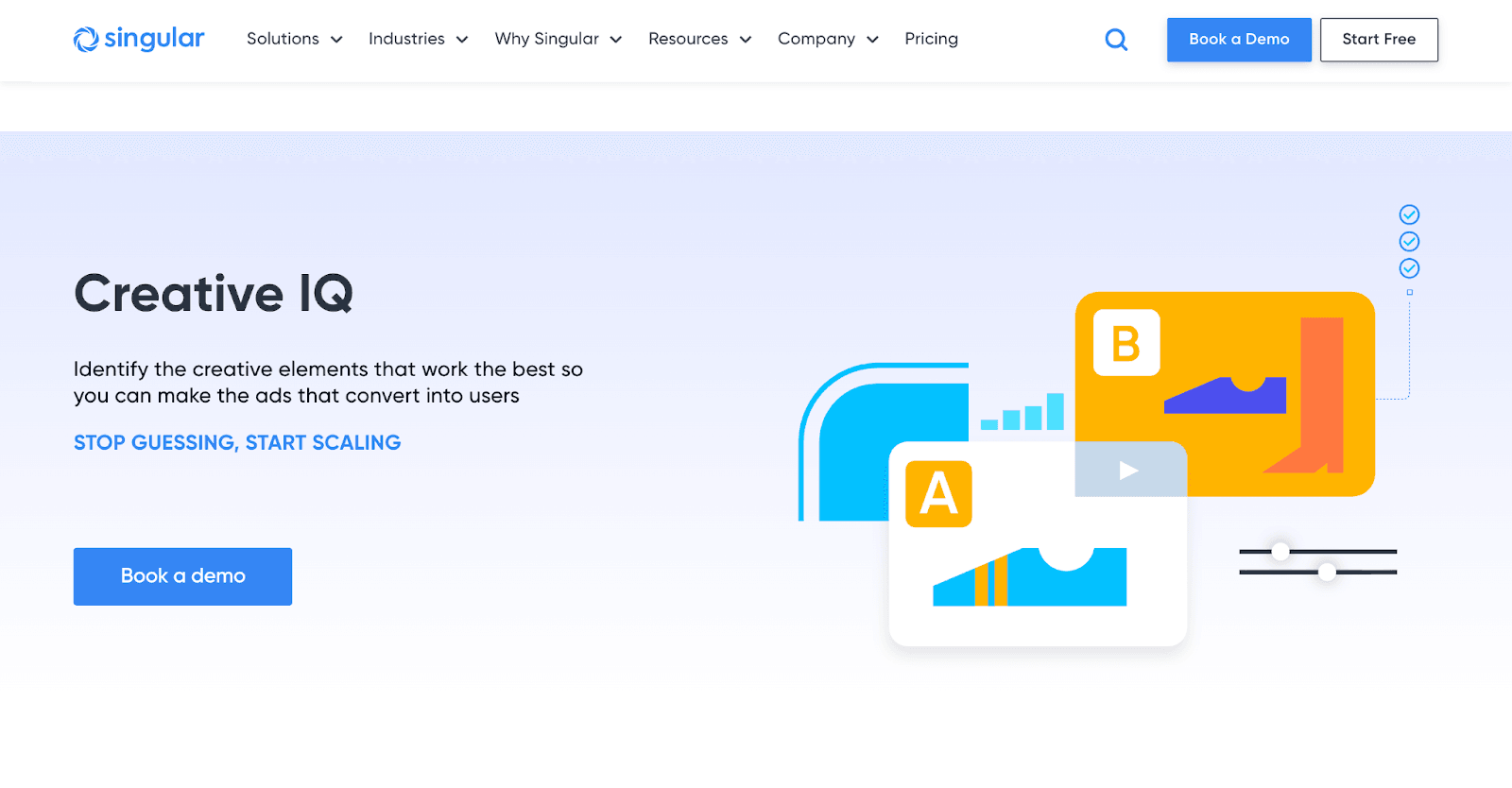
Creative IQ is Singular’s creative analytics layer inside its marketing intelligence platform. It links assets to attribution and revenue data so teams can compare creatives across channels in one place.
Key creative features:
Asset gallery with previews next to KPIs
AI tagging for objects, text, and themes
Cross-network and SKAN-aware reporting
Filters by partner, campaign, and creative attributes
Exports and API access within the Singular stack
Strengths
Clear gallery view that pairs creatives with performance
Useful AI tags for quick grouping and comparisons
Solid if you already use Singular for measurement and cost aggregation
Limitations / Considerations
Tag depth is oriented to gallery filtering, not element-to-ROI at the tag level
Creative workflows are less focused on daily UA iteration
Best experience sits inside the broader Singular suite
May feel heavy for small teams that want fast creative reads
Best For
Teams already on Singular that want a familiar view of creative performance inside their existing attribution and cost reporting setup.
These platforms reflect how creative optimization has evolved from simple reporting into a data-driven discipline. Some tools score or benchmark creatives, while others organize performance visuals or consolidate attribution data. But the real edge now lies with solutions that turn creative elements into measurable performance signals, tools that help teams see exactly which visual, text, or gameplay choices drive installs and revenue, and do it fast enough to act on every cycle.
Also Read: Segwise vs Appsflyer Creative Optimization: Which Tool Wins in 2025?
How to Pick the Right Creative Optimization Tool
The best creative optimization platforms make it easier to test, learn, and scale what actually drives installs and revenue. When you’re evaluating options, focus on these areas to define how well the tool fits into your day:
Channel Coverage: Verify that the platform captures data across major social networks, self-reporting networks (SRNs), display, video, and playable formats. As a baseline, leading solutions now cover a wide range of cross-network mixes, allowing you to compare performance fairly across every channel you use.
Creative Tagging & Automation: Look for systems that automatically tag creative assets by visual elements, copy, format, or audio. Strong automation reduces manual work and makes it easier to spot patterns at scale.
Speed of insights: A good platform quickly flags top and weak performers. Faster insights shorten testing cycles and help you shift spend to proven winners without delay.
Linking creative to revenue: Validate that the vendor can integrate with your MMP (or export to BI) so you can map creative to installs and revenue/LTV. Many platforms require reliable integrations to achieve this.
Data access and exports: Check whether raw creative tags and performance data can be exported for audits, valuation, or deeper BI analysis. Reliable exports give you more control and protect long-term business value.
Setup and integration effort: Consider the engineering work required to get started. Many platforms now highlight a simple setup, but always test how quickly you can go from credentials to usable dashboards.
Pricing & Scale: Request typical integration timelines, inquire about the availability of no-code connectors, and determine whether pricing scales with ad volume or the number of creatives. Ensure the cost model aligns with your growth plan and can accommodate campaign spikes without unexpected costs.
Modern teams gain the most when their tool delivers tag-level clarity, real-time insights, and effortless integrations, turning creative data into confident, faster decisions.
Also Read: Top Creative Optimization Tools You Need in 2025
Conclusion
When comparing AppsFlyer creative optimization alternatives, the real goal is simple: find a platform that connects creative decisions directly to outcomes. Many tools can visualize results or score creatives, but few can explain why a specific ad drives stronger installs, revenue, or retention.
Segwise closes that gap. It is the only platform built fully around creative optimization, not attribution or scoring. Its AI agents automatically tag every element across images, videos, and playables, then link those tags to performance metrics such as IPM, CTR, and ROAS. This gives UA and growth teams complete creative-to-revenue visibility that attribution dashboards can’t provide.
While AppsFlyer’s creative module provides useful performance summaries, Segwise builds on that foundation with real-time, tag-level visibility. Teams can instantly see which gameplay hooks, dialogues, or visual cues perform best and act on those insights without delay. It shortens testing cycles, eliminates manual analysis, and turns creative data into clear, measurable growth decisions.
If your goal is to understand what truly drives performance and scale it faster, Segwise is the platform built for that.
You can begin with a free creative audit and connect Segwise to your ad networks or MMPs using simple no-code integrations. Start your 14-day free trial today and see how quickly you can turn creative data into winning decisions.
FAQ’s
1) Can I export raw creative tags or creative-level data for BI or audits?
Yes. Platforms such as Segwise and VidMob provide APIs and data exports that let teams pull tagged creative data into BI or audit workflows.
2) Will a creative-first tool speed up ideation and production?
Often yes. Competitor research, automated tagging, and data-driven briefs can shorten ideation and improve first drafts. Impact depends on volume, channels, and team workflow.
3) Can a creative optimization platform replace my MMP such as AppsFlyer?
No. Creative optimization platforms complement an MMP. They add tag-level analysis, creative scoring, or production workflows. Attribution still runs through your MMP.
4) Which signals matter most when judging creative ROI?
Prioritize element-level signals that link creative tags to installs and revenue. Include SKAN metrics for iOS. Require exportable data so your BI team can validate results.
5) What should teams prioritize when choosing AppsFlyer creative optimization alternatives?
Look for tag-level analysis across video, images, and playables. Verify no-code integrations with ad accounts and MMPs, reliable exports, and time to insight.

Comments
Your comment has been submitted successfully!